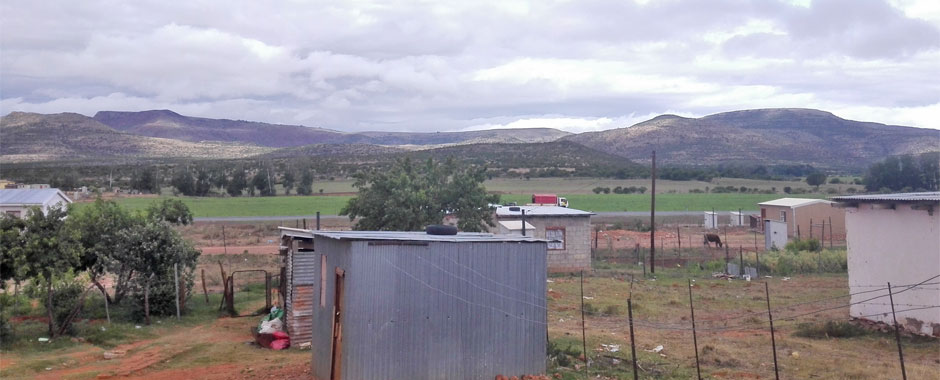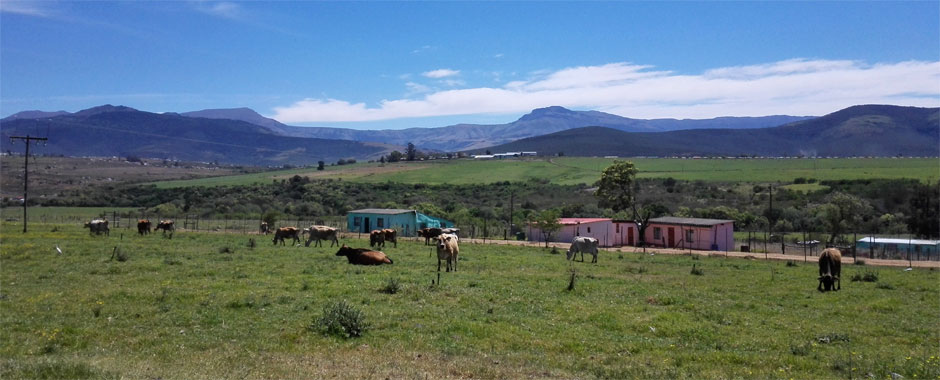In South Africa’s former ‘homelands’ the government is trying to ‘revive’ agriculture. These areas are a legacy of the 1913 and 1936 land acts, which reserved only 13% of the land for black South Africans, and where most victims of forced removals were relocated. One of the pillars of the government’s strategy is to support joint ventures between agribusiness companies and customary landowners in these areas.
But policy makers and researchers haven’t fully taken account of dynamics of class relations in these areas. They have tended to assume that the colonial and apartheid eras resulted in a ‘linear process of proletarianisation’ among former homeland residents. In fact, class in these areas is much more complex than assumed, as I show in a new STEPS working paper.
In applying a ‘one size fits all’ joint venture model, problems have arisen. Joint ventures haven’t performed as expected, and in some cases have generated various conflicts.
A tale of two farms
The new working paper compares class dynamics in two joint venture dairy farms involving the same agribusiness partner, Amadlelo Agri. The farms are located on irrigation schemes in Keiskammahoek and Shiloh villages in the former Ciskei homeland, now in the Eastern Cape province. These farms involve residents from the rural settlements as both landowners and workers.
The comparative case study shows that even though the same business model is applied in both farms, it produces quite different outcomes in each place.

At an obvious level, the divergent outcomes between Shiloh and Keiskammahoek are a function of the size of the beneficiary group, and scale of production. In Keiskammahoek, 2000 cows are kept on 745 hectares with joint venture dividends deriving to only 35 households. This sharply contrasts to Shiloh, where you have 900 cows on 450 hectares, with a huge beneficiary group of 395 households, and hence both smaller dividends and fewer jobs available.
But understanding class dynamics in each context is also integral to explaining these divergent outcomes. Class and other aspects of social differentiation help explain the very distinctive politics and intragroup conflicts emerging at each farm. To understand more about the class dynamics in these areas and why it matters for these joint ventures, I make use of a class-analytic approach. This involves developing a class typology that’s specific to the contexts where the joint ventures are being implemented.
What kind of classes flourish under joint ventures?
Households located in these communal areas are anything but homogenous. For example, among the seven class categories I identified are ‘rent earning pensioners’ and ‘worker farmers’. The former are households that survive entirely off rents (land rents and joint venture dividends) and pensions. The latter, in sharp contrast, derive their largest income source from wage labour (often migrant jobs but household members are also working on the joint venture farms) and are notably reinvesting these incomes in own-account farming on a substantial scale.
These contrasting livelihood and accumulation strategies (and the capital / labour relations characteristic to them) can produce various tensions among customary landowners, as well as with the wider community.
Of course, class dynamics aren’t the only dynamics at play here: they’re intermeshed with many other ‘determinations’ and aspects of social difference like gender and generation, and are thus complex and contingent.
Using a class analytic approach also reveals the emerging agrarian class structure that is created, in part, when a joint venture is carried out, but which intersects with historical trajectories of class formation. Significantly, my study could not identify any households as ‘middle farmers’. This contrasts with research conducted, for example, by Cousins (2013) in the context of a smallholder irrigation scheme in South Africa, and Scoones et al. (2012) in the context of land reform in Zimbabwe, which both identified dynamic and accumulating ‘middle farmers’. Many authors argue that creating conditions for ‘accumulation from below’ for such dynamic petty commodity producers is a more progressive pathway of agrarian reform.
But in the joint venture model, customary landowners are positioned as workers and/or recipients of dividends and land rents, because production is directed by agribusiness. The model thus has important implications for emerging class dynamics in the countryside. It does not seem to provide the conditions for establishing a class of dynamic middle farmers.
In both sites, however, evidence indicates that joint venture jobs make significant contributions to household incomes. In Keiskammahoek, the larger JV dividends are also being reinvested in own-account farming, particularly in the households categorized as worker farmers and rent earning rich farmer and business owners. However, accumulation in farming is limited and household livelihoods are generally strongly reliant on off-farm incomes.
I also could not find evidence of emerging small-scale capitalist farmers among customary landowners. This is a class identified by Cousins (2010) in his typology for small-scale agricultural producers in South Africa. However, some joint venture farm managers could be categorized as such. They have begun accumulating large dairy herds, which are rented out to generate significant incomes. Amadlelo Agri’s model does therefore seem to be facilitating the entrance of new black managers into a dairy sector that’s been historically dominated by large-scale white capitalist farmers and managers.
Rural pathways under land reform
Land and agrarian reform remains an intensely debated topic in South Africa, and a crucial discussion is on who should benefit from reforms. Debates around class formation in the former homelands are important precisely because they have implications for the types of pathways we imagine for agrarian reform.
Closer attention is required on more appropriately crafting solutions to meet the realities of diverse ‘communities’. Broadening out the range of pathways is suggested, in which joint ventures may be one possibility among a range of other production models – including hybrid models.
Download the paper
Bunce, B. (2018) A Class-Analytic Approach to Agricultural Joint Ventures in the Communal Areas of South Africa, STEPS Working Paper 103
About the author
 Brittany Bunce is a researcher on the ESRC/NRF-funded project ‘Governing the Land-Water-Environment Nexus in Southern Africa’.
Brittany Bunce is a researcher on the ESRC/NRF-funded project ‘Governing the Land-Water-Environment Nexus in Southern Africa’.
Brittany is a PhD student at the Institute for Poverty Land and Agrarian Studies (PLAAS) at the University of the Western Cape in South Africa. She started her PhD studies in March 2015 and is supervised by Professor Ben Cousins. Her research interest is broadly on the political economy of agrarian change.
